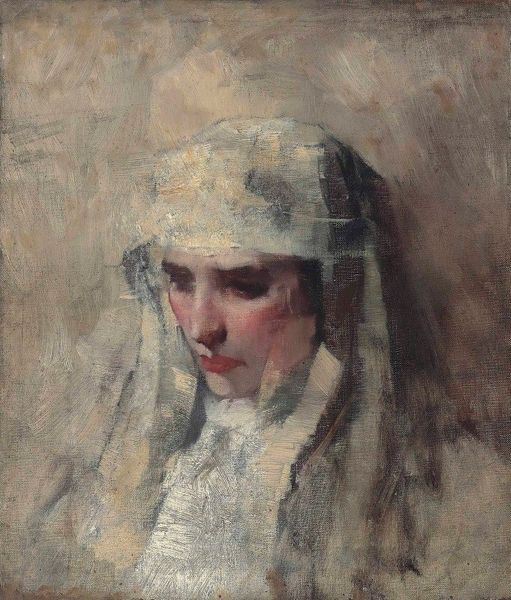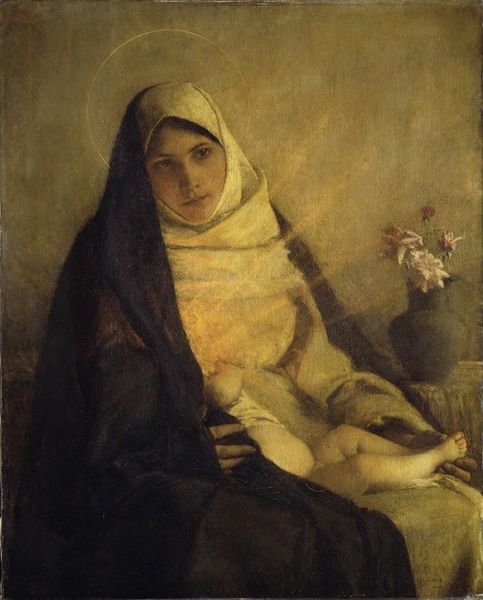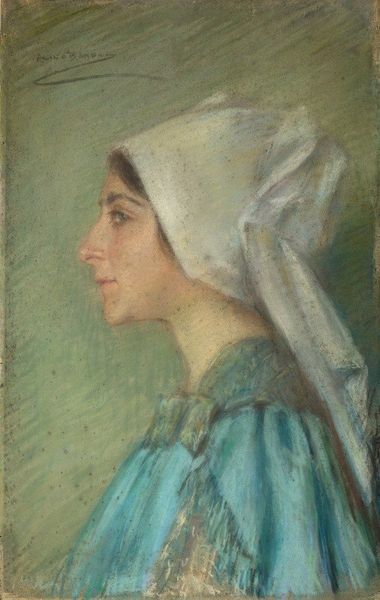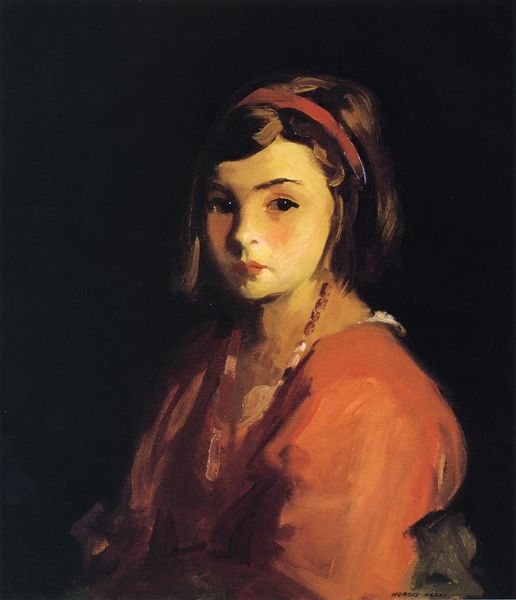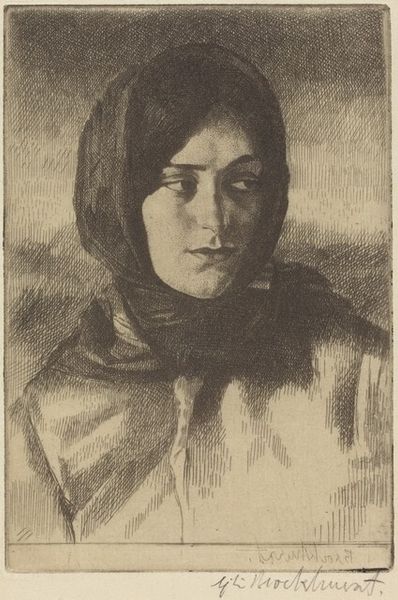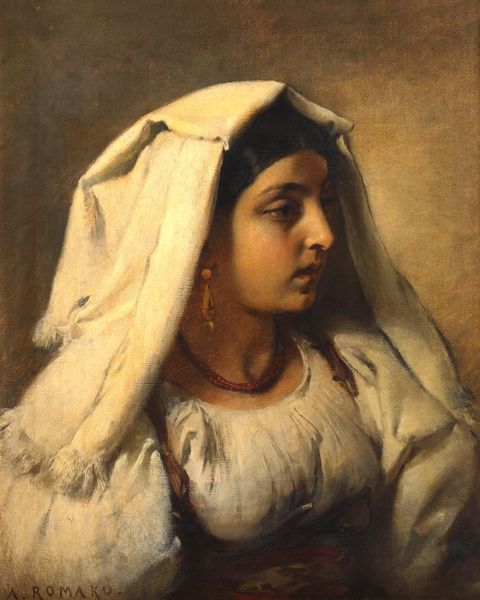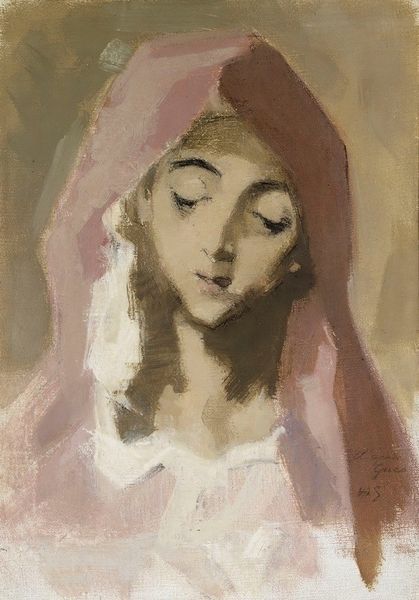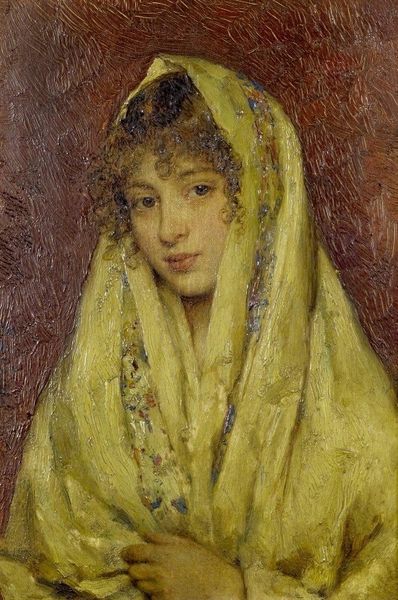
painting, oil-paint, impasto
#
portrait
#
painting
#
oil-paint
#
oil painting
#
impasto
#
romanticism
Copyright: Public domain
Editor: Here we have Nicolae Grigorescu's "Giri with White Veil," an oil painting with a clear focus on the subject's face framed by the veil. I'm immediately struck by the texture of the veil itself. What can you tell us about how Grigorescu’s material choices shape our understanding of this portrait? Curator: What stands out to me is the pronounced impasto. Notice the visible brushstrokes, particularly in the veil. The layering of paint, its sheer physicality, brings forth questions about labor, and artistic intention. It's not just about depicting a woman; it’s also about showcasing the very act of painting. How does this materiality affect its interpretation beyond just being a 'portrait'? Editor: I see what you mean! It’s almost like the subject of the painting is as much about the oil paint and how it's applied as it is about the woman herself. Do you think this emphasis on material points to a broader social context? Curator: Absolutely. Grigorescu was working in a time of significant social and economic change. The rise of industrialization allowed for mass production of painting materials. So his almost defiant focus on handmade impasto becomes quite compelling. How does knowing this affect your view? Editor: It definitely changes how I see the painting! Knowing about the rise of industry gives a different layer to that texture. It suggests a sort of pushback against the encroaching industrial landscape, highlighting the value of handcraft. Thanks for offering a completely different way of understanding this artwork! Curator: Of course! It’s through understanding materials, methods, and context that we truly grasp art's significance. Examining the labor involved can tell us untold stories.
Comments
No comments
Be the first to comment and join the conversation on the ultimate creative platform.
